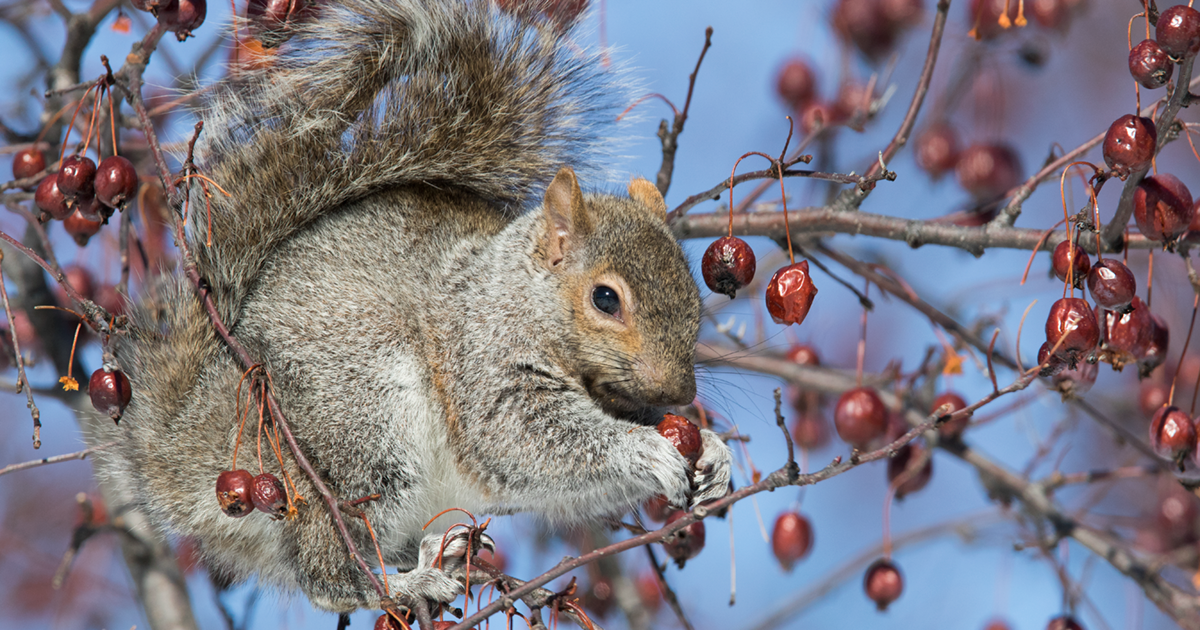
Seeing a squirrel dash from snow covered tree to snow covered tree, or a coyote walking around with a snow-covered nose can make us want to help out our wild friends during the winter months. Fortunately, there are some great ways we can help make winter easier on the wildlife around our homes without negatively impacting them or the greater ecosystems we share.
Here’s our top three tips:
- Give them space during the colder months. There’s a misconception that seeing wildlife active during the day or in winter means they’re in distress, starving or otherwise requiring intervention. The reality is, most fur-bearing animals, including those who some may say hibernate, don’t actually sleep all winter. Some species go into torpor (not a ‘true’ hibernation) and others remain relatively active all year round. Trying to intervene or provide food can create changes to their behaviour as well as others in the ecosystem – it is best to leave wild animals to their natural activities and behaviours, even in urban areas, during the winter.
- Create habitat for everyone. Bird houses and bat boxes are fun projects that the whole family (or an individual) can build together that truly creates habitat for essential species, and can be done inside the home or workshop. While only a handful of locales can do much gardening in the winter months, planning a garden to include native species, wildlife-friendly deterrents or protections for vegetable plots, or getting involved with a local naturalist or gardening club can set you – and the animals – up for a healthy, coexistence-focused spring!
- Volunteer with a wildlife rehabilitator. If you want a direct impact on injured, orphaned or ill wildlife, locating and working with a local wildlife rehabilitator is likely the best route forward. From donations of money or supplies to driving from one location to another, wildlife rehabilitators can use a lot of assistance! Search for your local rehabilitators and reach out to find out how you can make an impact for their lifesaving work.
Please remember that feeding can change behaviour and the ecosystem, putting wildlife at risk and creating opportunities for negative interactions with other people, traffic and infrastructure.
Are we missing something from this list? Let us know! Comment on our Facebook, Twitter, Instagram or LinkedIn posts or tag us with your ideas.
